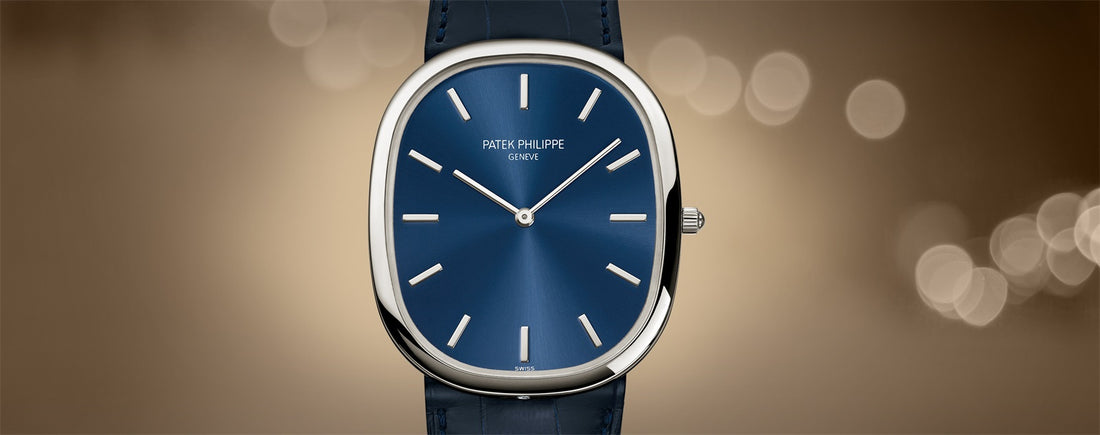
Gerald Genta, a great watch designer
Who was Gerald Genta
The world of horology would not be the same without Gerald Genta (1931-2011). He was a sort of wunderkind of modern horology and has been one of the most influential professionals of all time. At the same time, he both invented the profession of watch designer and was also a technical master of the craft of watchmaking.
He was born in Geneva. His mother was Swiss and his father came from Piemonte - and let me tell you, my family comes from Piedmont as well. He studied watchmaking all his life: at age 20, after the school, he was recruited by Universal Genève SA, at the time one of the best manufactures for its chronograph models.
To learn more about watches, buy The Watch Manual here
Genta worked in the technical department, and designed Universal's Polerouter Microtors in the 1950s, as well as the Golden and White Shadows during the mid-1960s. Between the innovations he pioneered, the most notable and widespread is the off-centered rotor of automatic watches. This solution permitted to reduce the thickness of movements. Eventually, Genta created modern designs such as the Bvlgari Octo Finissimo.
 Bulgari Octo Finissimo (picture from Bulgari.com)
Bulgari Octo Finissimo (picture from Bulgari.com)
Gerald Genta: a creative mind and his iconic watches
Genta has been the creative mind that has designed two of the modern icons of horology, the Audemars Piguet Royal Oak and the Patek Philippe Nautilus.
After he left Universal Geneve, he pursued his career as an independent designer - and he worked for the best manufacturers, for whom he designed some models that became iconic. Between them we can cite:
- Universal Geneve’s Polerouter (1954);
- Omega’s Constellation (1959);
- Patek Philippe’s Golden Ellipse (1968);
- Audemars Piguet’s Royal Oak (1970);
- IWC’s Ingenieur (1976);
- Patek Philippe’s Nautilus (1976);
- Cartier’s Pasha de Cartier (1985).
The Tourbillon by Gerald Genta
He then started his own company. Here, he specialized in complicated watches such as the Sonneries. He created the Gérald Genta Octo Grande Sonnerie Tourbillon. It contained four gongs and an emulated Westminster Quarters bell ring at each quarter and on the hour, "the same melody rung out by London's Big Ben". Thus, the Grande Sonnerie Retro, back then the world's most complicated wristwatch, priced at approximately $2 million.
During the 1980s, he showed his most creative and quirky spirit. Through an agreement with The Walt Disney Company, he made a series of watches featuring limited editions of the Disney characters. Among them, Mickey Mouse, Minnie Mouse, Donald Duck, Scrooge and Goofy, with cases made of 18 carat gold. Genta died in Monaco at age 80.
To learn more about watches history, buy The Illustrated Horology History here
 Patek Philippe Nautilus (picture from Patek.com)
Patek Philippe Nautilus (picture from Patek.com)
Gerald Genta and the Polerouter: the watch to flight over the North Pole
But we would like to focus on a couple which possibly represent the keystone of his career as a designer: the Polerouter and the Golden Ellipse.
In 1954 Universal Genève commissioned him to design a new watch: the Polerouter. Genta was only 23 years old.
The name of this timepiece derives from the fact that Universal Genève supplied the watches to the Scandinavian Airlines System crew. So, it decided to pay homage to the new route connecting New York to Europe via the North Pole. Traveling over the North Pole was not a trivial problem, as the navigation systems had to be completely overhauled to cope with the high magnetic fields at the North Pole. Time measuring instruments suffered from the same problem, including wristwatches worn by the crew. So, the Polerouter was the answer to overcome these difficulties.
If you open up the watch, you can readily see its micro-rotor, which is one of the main interesting aspects of this timepiece. The Polerouter remained in production until the end of the Sixties, proposed in several models. The case of the first Polerouter had a diameter of 34.5mm, and its particular beveled lugs characterizing the design. The dial of the timepiece is a so-called 'pie-pan.' It is a three-dimensional, composed of two sectors, which play on the chromatic contrast and the difference in the height of the raised outer ring. Also, the outer part presents hour indexes in relief. The inner part is black, leaving the scene to the silver dauphine spheres and the graphical crosshair.
Gerald Genta and the Golden Ellipse by Patek Philippe: a dress watch
After the Polerouter, and his activity in Omega, Genta became a freelance designer and was contacted by Patek Philippe to design a dress watch. He came out with the design for the Golden Ellipse in 1968 - the year of significant transformations. He was 37 back then, and already very successful. The world was shaken by this new creative vibe of the Flower Power generation, which was putting everything that was established before to shame. The new, organic lines belonging to the designs of this era were everywhere - and Genta applied them to watches.
 Patek Philippe Golden Ellipse (picture from Patek.com)
Patek Philippe Golden Ellipse (picture from Patek.com)
He was heavily influenced by the curvy, carefree design of this generation, and put it into his research. So, he devised a fluid-looking luxury watch. It featured a shape between the round and the square, with no lugs, made to become a sort of natural extension of the wrist. The dimensions were an expression of exact proportions, as he applied the Golden Rule to every element of the Golden Ellipse. And as you can see, this shape represents the origin of the later concepts of the Royal Oak and Nautilus. Just look at it. The Nautilus is a Golden Ellipse with a broader bezel and a steampunk-ish mood.
The stainless steel into haute horlogerie
Genta’s research as a designer made him also forfeit the traditional gold of dress watches to get into the more humble and equalitarian stainless steel. A sort of heresy back then. But his clients followed his genius (because genius it was), launching the Royal Oak first and the Nautilus later. And at the same time, opening wide the gate of the fortress of haute horlogerie to the stainless steel clad barbarians. And the king of them all, Rolex, stepped in triumphantly and seized the place and the crown for himself.
 Omega Constellation (picture from Omegawatches.com)
Omega Constellation (picture from Omegawatches.com)
We think that this moment was the real turning point of Swiss horology history, apart from the effects of the Quartz Crisis - and the beginning of the rise of the Rolex dominance.
In time, Genta set up his own company, creating some of the most intricate minute repeaters out there. And also, some timepieces based on Disney characters, revealing his playful mood, along with his technical mastery.
At the end, his company was bought by Bulgari, which now retains all of his developments in complicated watches, and judging their most recent timepieces, has put them to good use.
The Watchonomicon is an independent blog, written and managed by The Watch Manual. The Watch Manual is NOT affiliated in any way with any brand mentioned in articles.
To learn more about watches, buy The Watch Manual here

 Audemars Piguet Royal Oak (picture from
Audemars Piguet Royal Oak (picture from